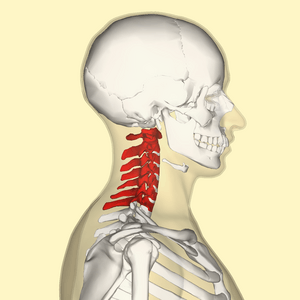Tetraplegia facts for kids
Tetraplegia, also called quadriplegia, is a condition where a person loses the ability to move and often feel their arms, legs, and body. This means they cannot use all four of their limbs. It can also affect their senses.
What is Tetraplegia?
The word "tetraplegia" comes from Greek words meaning "four" and "paralysis." It describes a condition where someone cannot move or feel their arms, legs, and torso. This usually affects both their ability to move and how well they can use their senses.
Different Names for Tetraplegia
The term quadriplegia is commonly used in North America. However, tetraplegia is the term used more often in Europe. Both words mean the same thing.
What Causes Tetraplegia?
Tetraplegia happens because of damage to either the brain or the spinal cord. The spinal cord is like a main cable that carries messages between your brain and the rest of your body.
The damage usually occurs in the cervical vertebrae. These are the bones in your neck that protect the top part of your spinal cord.
- If someone has an injury high up, like at the C1 vertebra (the very first bone in the neck), they might lose function from the neck down. They may even need a special machine to help them breathe.
- If the injury is lower, for example at the C7 vertebra (the last bone in the neck), the person might still be able to use their arms and hands. The exact effects depend on where and how severe the injury is.
See also
 In Spanish: Tetraplejía para niños
In Spanish: Tetraplejía para niños


